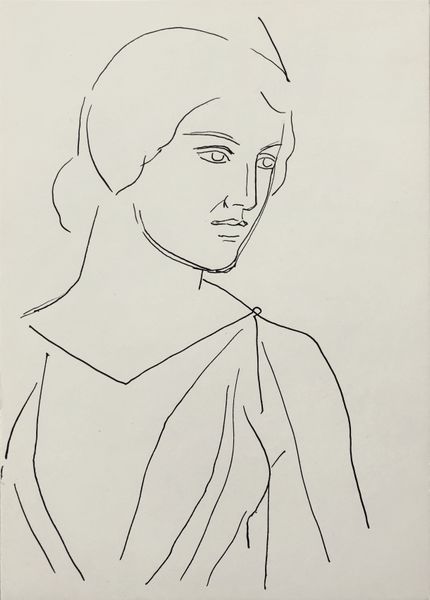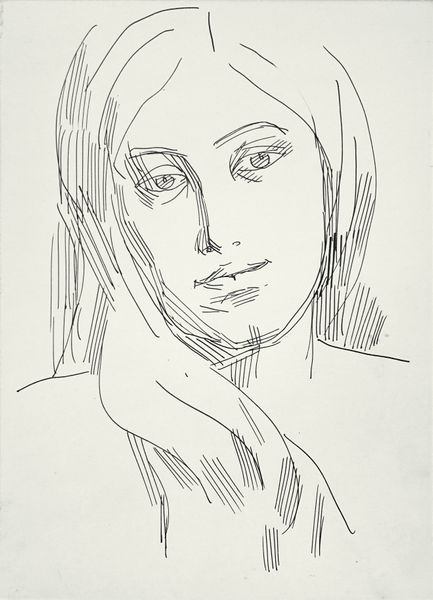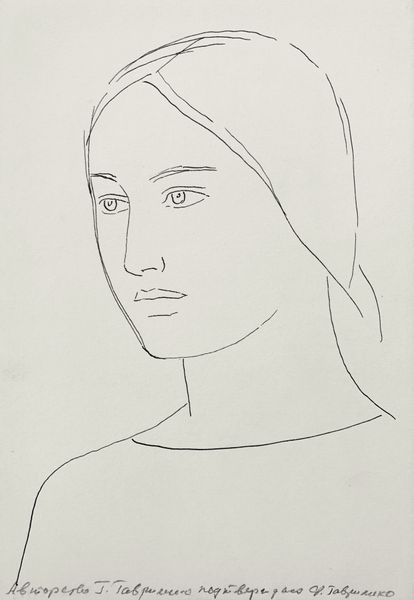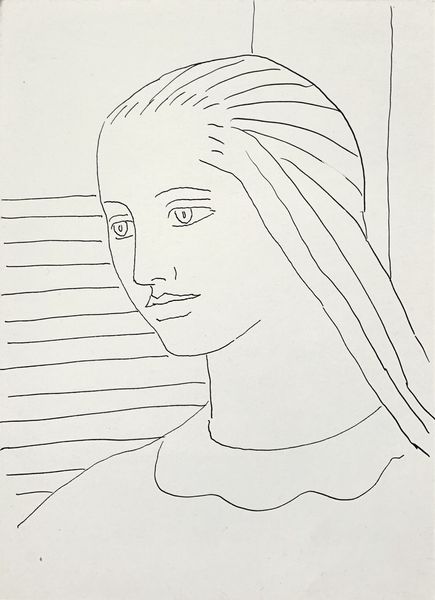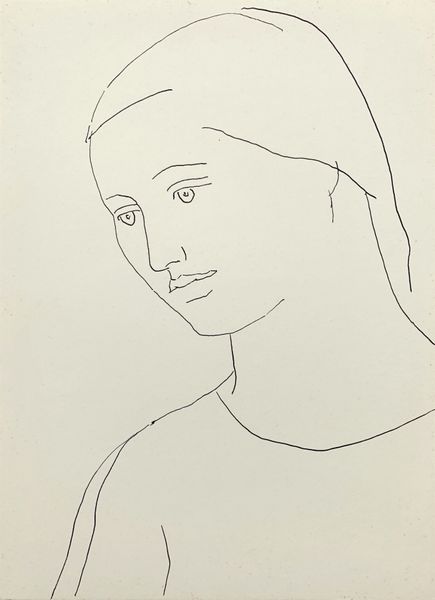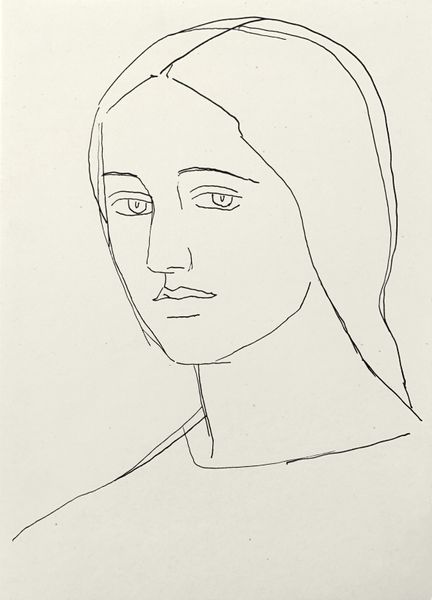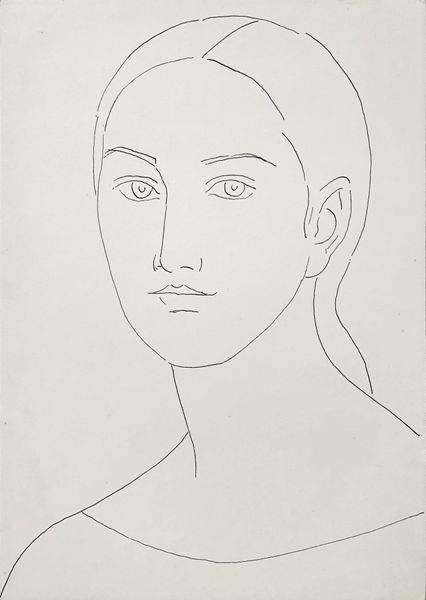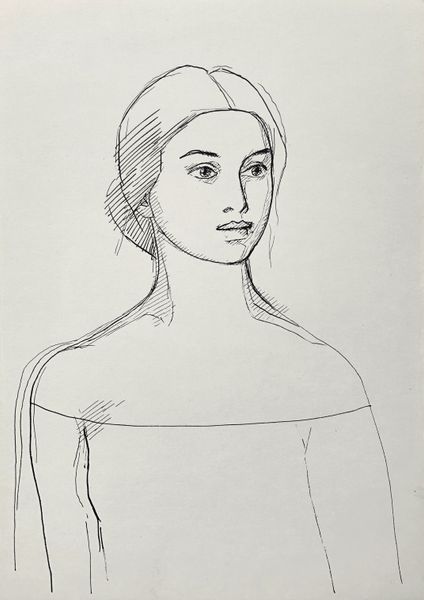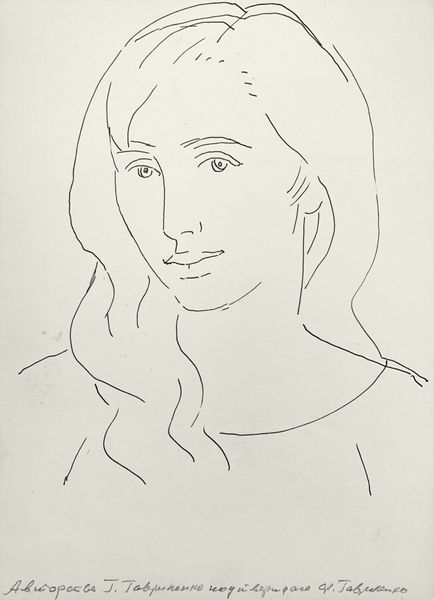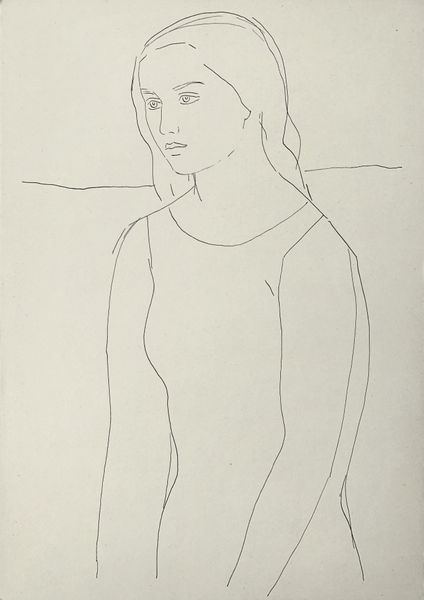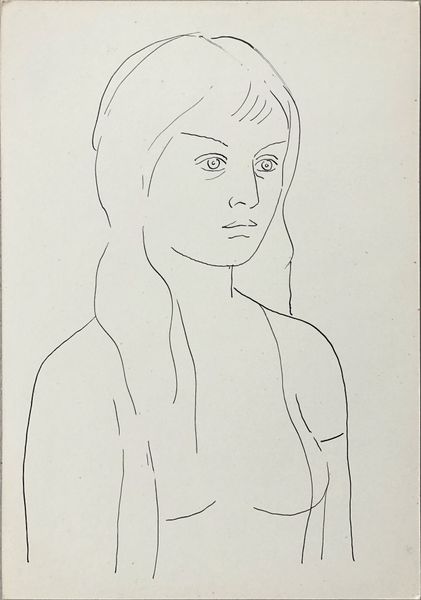
drawing, paper, ink
#
portrait
#
drawing
#
figuration
#
paper
#
ink
#
ink drawing experimentation
#
line
#
portrait drawing
Copyright: Hryhorii Havrylenko,Fair Use
Curator: Let’s turn our attention to Hryhorii Havrylenko's “Female Image,” created in 1975. A rather striking drawing in ink on paper. What are your initial thoughts? Editor: Spare, really. Economical even. Just enough ink laid down to conjure a presence, but it feels fragile. I’m immediately drawn to the starkness of the medium. You see every little hesitation in the line. Curator: Precisely, and the choice of ink and paper carries weight, doesn't it? In Soviet Ukraine at the time, materials mattered. The scarcity could dictate artistic choices. This portrait drawing style served many purposes. Was it meant to just explore art's capabilities, or more? Editor: Absolutely. Consider the materiality within the context of restricted artistic expression. Using readily available and affordable materials like ink and paper allowed Havrylenko to work somewhat independently, a silent gesture, so to say, amidst the prevalent socialist realism imposed by the regime. It challenges the conventional understanding of what fine art materials were at the time. Curator: It offered him accessibility and a sense of quiet resistance, in a way. And what about the figure itself? What message might be communicated through the act of representation during a period of strict control of artistic output? Editor: The choice of subject is very intriguing. You know, the face seems a common enough image; however, to offer such direct representation of a 'female image' confronts the standardized imagery pushed at the time, turning the tables. The woman becomes a focal point, an act of agency. The lack of ornamentation in terms of materiality—simple lines in ink—adds weight to the raw honesty of her image. Curator: Do you think the minimal line work has anything to say in how we reflect on artistic traditions of the period? The cultural understanding and expectations? Editor: Without question. He reduces form to its bare essentials. Each stroke holds importance; each one a decisive action. This, coupled with accessible materials, reflects a democratization of art production in times when such practices were actively discouraged. It's all very defiant. Curator: It's a piece that holds complexities within its seeming simplicity, offering insights into Ukrainian artistic practices of the 1970s, where limited means fostered creative resilience. Editor: Indeed, "Female Image" makes you consider the many political aspects present within art during the Soviet era.
Comments
No comments
Be the first to comment and join the conversation on the ultimate creative platform.
